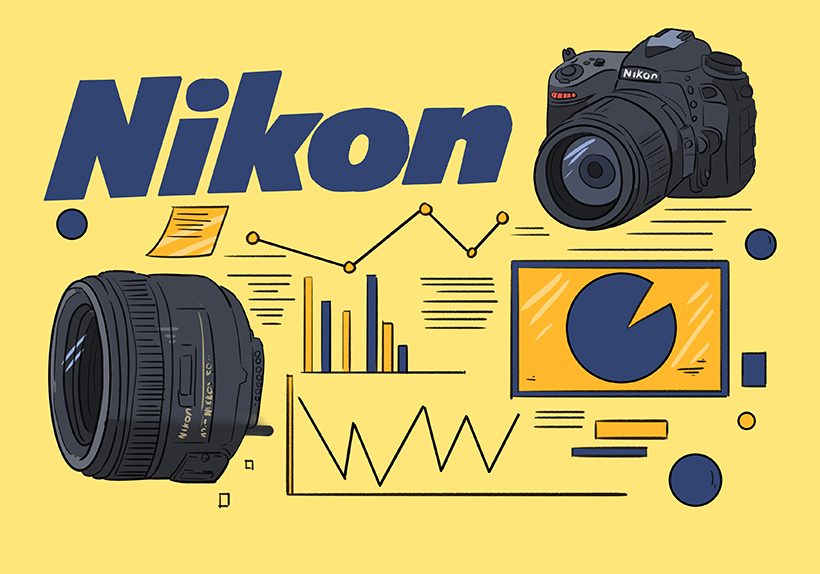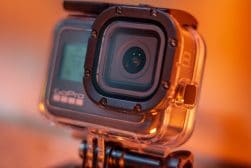
11 Surprising Nikon Statistics (Fact Checked for 2024)
Discover all the most up-to-date facts, figures and statistics about Nikon. A perfect resource for journalists, updated for 2024.
Learn | Statistics & Facts | By Jeff Collier | Last Updated: February 6, 2024
This article is an updated list of 11 interesting Nikon statistics for 2024.
Nikon is a Japanese multinational corporation that specializes in optics and imaging products.
Among Nikon’s most notable product lines are Nikkor lenses, F-series 35mm film SLR cameras, D-Series DSLRs, Z-Series mirrorless cameras, the Coolpix compact cameras, and the Nikonos of underwater film cameras.
Find out more in our up-to-date roundup of Nikon stats.
See also:
- Panasonic Statistics
- Fujifilm Statistics
- Sony Statistics
- DJI statistics
- Leica Stats
- Canon Stats
- GoPro statistics
- As of July 25, 2023, the company has been operating for 106 years.
- 18,437 is the total number of Nikon consolidated employees as of March 31, 2022.
- 31.2% of Nikon’s annually recruited employees are female.
- In 2021, Nikon ranked as the third-largest camera manufacturer according to global market share.
- As of February 2023, Nikon’s market cap was $3.53 billion.
- Nikon’s Imaging Product Business segment accounts for 42% of Nikons’ first-quarter fiscal year revenue.
- Imaging product sales recorded a revenue increase of up to 18.7% due to the expanded sales of mid-to-high-end optical products.
- With a total of 340K unit sales, interchangeable lenses lead the sales of Nikon’s Imaging Products Units in the first quarter of 2023.
- More camera and photography industry stats.
General Nikon Statistics
We’ve compiled a list of general Nikon statistics to stay updated about the Japanese optics company.
From the company’s history and employee numbers to its financial profile, read below to find out more!
1. The company has been operating for 106 years
Nikon has a long history. Since its establishment on July 25, 1917, the company has been in the optics and imaging industry for over 100 years! It all started in the 20th century, when Japan was catching up with modernized Europe.
Recognizing the need for Japanese optical instrument companies, Koyata Iwasaki founded Nippon Kogaku Kogyo (Japan Optical Industries Co., Ltd.).
The Japanese corporation began designing and producing advanced optical instruments, such as rangefinders and microscopes. In 1988, the company was renamed after its cameras to its current name, Nikon Corporation.
2. Nikon products are present in 90 countries
The importance of Nikon products didn’t stop with the Japanese industrial revolution.
During World War II, the optics company employed over 23,000 workers and ran over 19 factories! They produced all sorts of advanced optical instruments for the Japanese army. Those include binoculars, cameras, periscopes, and more.
Nikon’s superior products spread throughout the world after the war. That cemented the Japanese company as one of the pioneers in the optics industry. Nowadays, Nikon products reach more than 90 countries all over the world.
3. 18,437 is the estimated number of Nikon employees.
As of March 31, 2022, Nikon has 18,431 employees currently working for it. The company also has 4,174 non-consolidated employees, totaling 22,611 overall workers. From the statistics, you can see that the company provides numerous employment opportunities.
However, the number of Nion employees decreased by more than a thousand from the previous year, 2021. What’s more, compared to other big Japanese corporations, Nikon’s employment number doesn’t fall in the top 100.
Toyota wins the title of the company with the most employees in Japan, having around 372,817 workers. As you can see, the optics company is way behind, placing at number 125 on the list.
4. 31.2% is the ratio of annual female employment in Nikon
Nikon took the initiative to increase the percentage of female employees and managers to at least 25% and 7.5%, respectively.
In the fiscal year 2022, the Japanese company hired 31.2% of females through the regular annual recruitment process. As for the management positions, women accounted for 7.2%.
Asia and Oceania account for the highest ratio of female employee recruitment, reaching an impressive 67.7%. Nikon companies in Europe are in second place with 26.1%, which is a tad higher than the groups in the Americas. The latter hired 22.6% of women.
With only 12.9% of female employees as of March 2022, Nikon corporations in Japan placed last in promoting women’s advancement in the workplace.
How Much Do You REALLY Know About Photography?! 🤔
Test your photography knowledge with this quick quiz!
See how much you really know about photography...

Interestingly, Nikon groups don’t follow the same order in management positions. Companies in the Americas took first place. The ratio of female management positions in the former is 28.4%.
Europe had a 24.4% ratio, followed by Asia and Oceania, both with 23.7%. Again, Nikon groups in Japan came last, with women accounting for only 3.7% of executive positions.
Nikion Financial Statistics
Let’s take a closer look at Nikon’s financial statistics to gain better insights into how well the company is doing compared to previous years.
5. As of February 2023, Nikon’s market cap is $3.53 billion
With a market cap of $3.53 billion, Nikon ranks in the 2991st place as the most valuable company according to market cap. That accounts for a 12.72% increase compared to the $3.13 billion of the previous year.
6. Up to 16.5% sales increase in the healthcare business
Interestingly, Nikon’s Healthcare Business sales increased significantly after COVID-19.
The Japanese company earned 73,243 million yen in revenue due to the rising demand for semiconductors, ophthalmology instruments, and other electronic components. That accounts for a 16.5% increase in Healthcare Business revenue over the previous fiscal year.
7. Component Business generated 40,869 million yen in total revenue
Nikon’s Component Business bloomed in both total revenue and profit sales for the year 2022. Thanks to expanded sales of EUV-related components, Customized Product Business, a subsidiary of this business segment, generated increased revenue and profit.
Likewise, Digital Solution Business, which also belongs to Nikon’s component company, showed similar results. As a result, the group recorded 40.869 million yen in revenue. That accounts for a 58.5% increase from the previous year.
Nikon’s Camera Division Statistics
Here are some interesting statistics and facts about Nikon’s camera division:
8. Imaging products saw an 18.7% revenue growth in 2022
According to Nikon’s financial statement for the year 2022, the group achieved a revenue of 178,234 million yen. That’s an increase of around 18.7% from the previous year, all thanks to product improvement.
The company expanded its mid-to-high-end product sales by enhancing the lineup of interchangeable lenses used for mirrorless cameras.
9. In 2021, Nikon ranked as the third-largest camera manufacturer
Nikon remained a strong competitor in the camera market, even with the continuous decline in digital camera sales over the years.
In 2021, Nikon ranked as the third-largest camera brand according to global market share. The company accounted for 13.7% of camera sales, following Canon and Sony. However, compared to 2020, Nikon’s market share declined by 4.9%, dropping from 18.6% to 13.7%.
10. Nikon’s Imaging Product Business accounted for 42% of the company’s revenue as of the fiscal year 2023
As of the first quarter of the fiscal year 2023, Nikon’s Imaging Product Business accounted for 42% of the company’s total revenue. Additionally, the business segment had a 4% revenue increase compared to the first quarter of the previous fiscal year.
11. Interchangeable lenses lead the sales of Nikon’s Imaging Products units, reaching 340K units
Interchangeable lenses account for a significant portion of Nikon’s Imaging Business’s increased sales in 2023, taking the lead with 340K sales units. Interchangeable lens cameras come in second, selling around 200K units.
With 40K sales units, Nikon’s Compact DSC products take the last place in the company’s sales. The latter cameras don’t have an interchangeable lens feature, which might be the reason behind the considerably lower unit sales.
Sources
- https://www.nikon.com/about/corporate/history/chronology/1917/index.htm
- https://www.linkedin.com/pulse/marketing-strategy-nikon-prateek-munjal
- https://www.nikon.com/about/corporate/profile/data/
- https://www.nikon.com/about/sustainability/report/2022/sr2022_18.pdf
- https://companiesmarketcap.com/nikon/marketcap/
- https://www.nikon.com/about/ir/finance/performance/
- https://www.statista.com/statistics/1004962/global-leading-manufacturers-digital-cameras-market-share-sales-volume/
- https://www.dpreview.com/news/5904258104/nikon-s-q1-results-show-profits-up-48-yoy-nearly-matching-its-pre-pandemic-results
- Best Nikon cameras
- Best Nikon lenses

Check out these 8 essential tools to help you succeed as a professional photographer.
Includes limited-time discounts.













